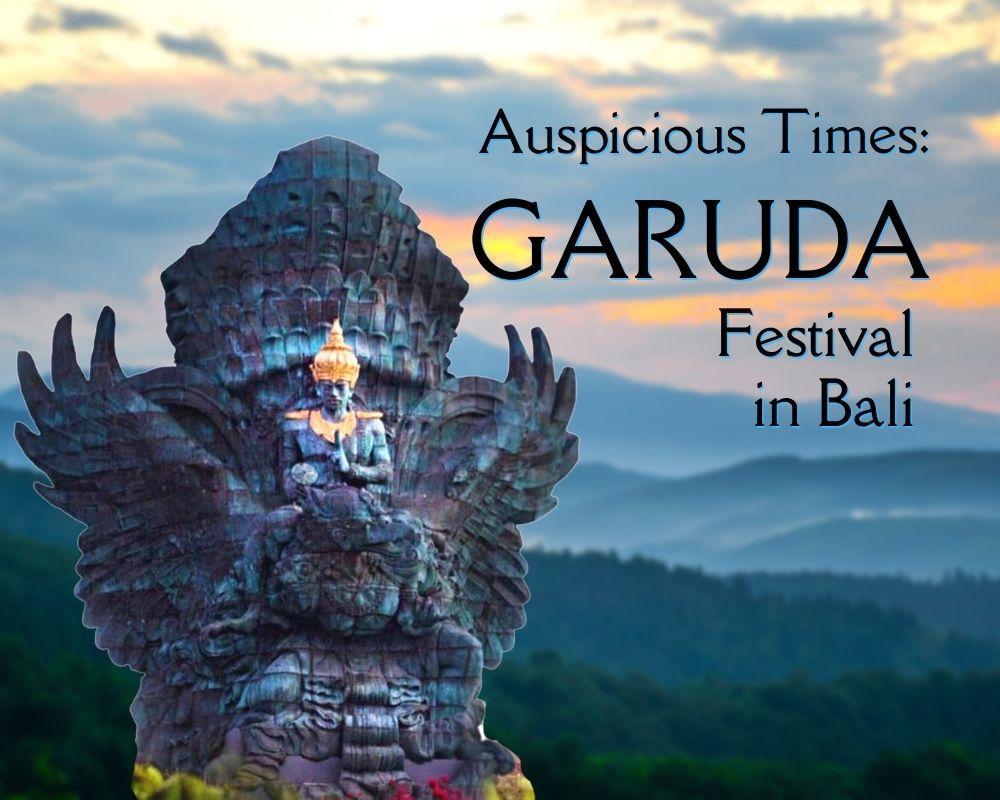
This week we celebrate the Garuda festival in Bali. The Garuda is an enormous mythical creature that is part bird, part human. Garuda is the legendary protector against serpents, venom, and remover of evil. Garuda is the eternal sworn enemy of the ancient Naga serpent race, which includes reptilians and dragons. Some say the powerful Garuda feeds exclusively on crocodiles and snakes! Garuda has extraordinary power to swiftly transport anywhere, ever-vigilantly guarding humanity against evil forces. 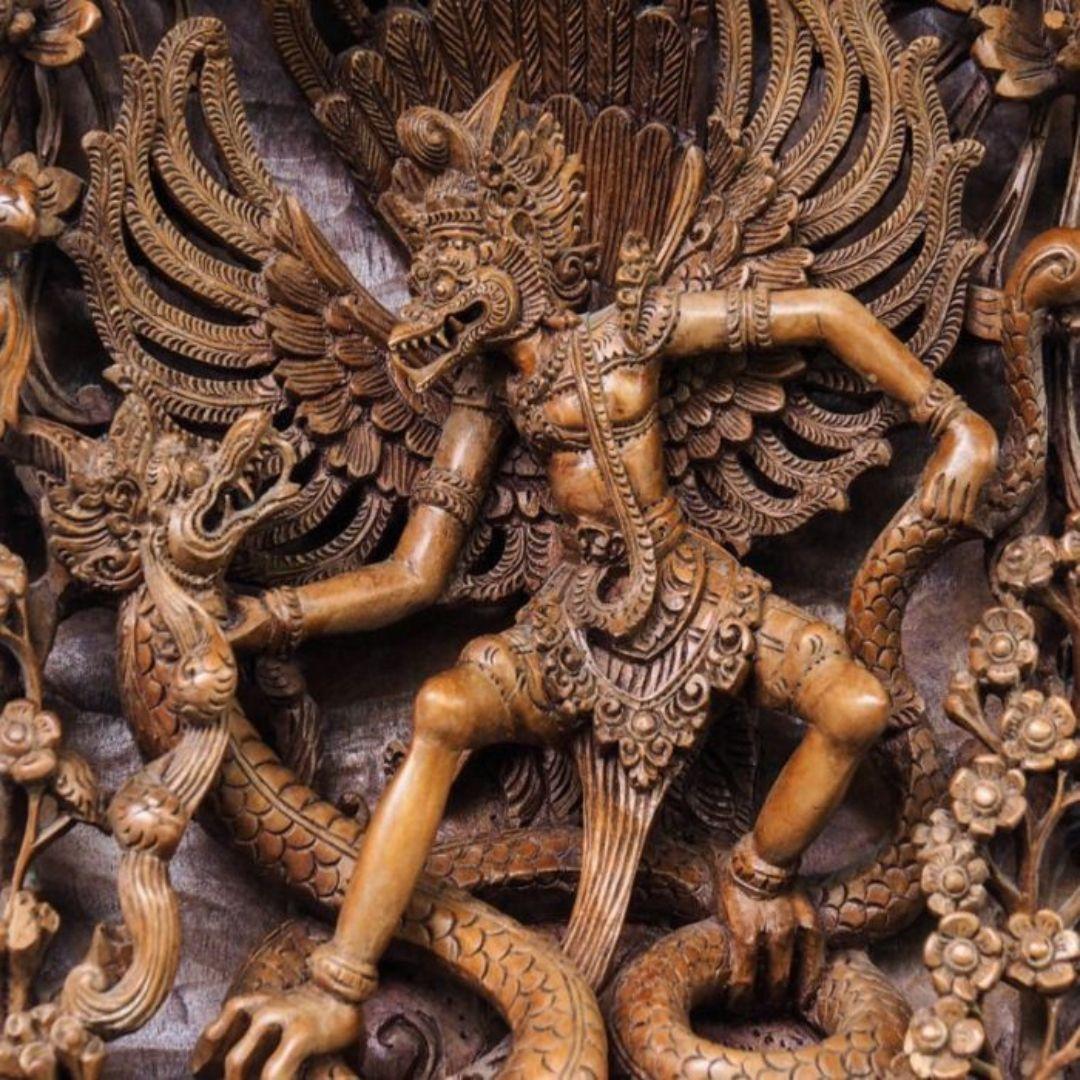
The Garuda has enormous red wings, a muscular body, human face with a large beak, and huge claws. Garuda is mentioned in ancient texts of the Mahabharata, Upanishads, Puranas, and the Vedas. He is often depicted flying through the air carrying the Lord Vishnu on his back. He is regarded as a divine protector in Hindu, Buddhist, and Jain traditions. Above all, Garuda is the great nemesis of dragons, snakes or “nagas”, which are often characterized in a negative light. Perhaps that’s because the evil dragon serpent Tiamat from the Babylonian creation story “Enuma Elish” caused so much trouble.
Nobody knows for sure if Tiamat was a dragon, a primeval goddess of salt water and chaos, or a planet that exploded, as the stories are all conflicting. Some say in the beginning of the universe, the dragon goddess Tiamat and her consort Apsu, the spirit of fresh waters, gave birth to all the gods, before humans were created.
Why are the Garuda and Serpents arch-enemies?
Although the mythical Garuda bird constantly attacks Nagas and snakes, this is not a simple tale of good vs. evil. The pair are seen as dual opposites that are both present in a balanced universe, such as Light / Dark, Sun /Moon, Yin / Yang. Neither is excessive, thus this polarity represents perfect harmony and balance as seen in Eastern philosophy.
According to Hindu and Buddhist mythology, the Garuda-Naga rivalry started when Garuda’s mother and the Nagas’ mother married the same man! The man then gave his two wives each one wish. The Naga mother asked for a thousand children. Garuda’s mother wished for just two children who were superior to all Nagas. Bitter rivalry between the wives continued until Garuda’s mother lost a bet and was humiliated to become servant and prisoner of the Naga wife.
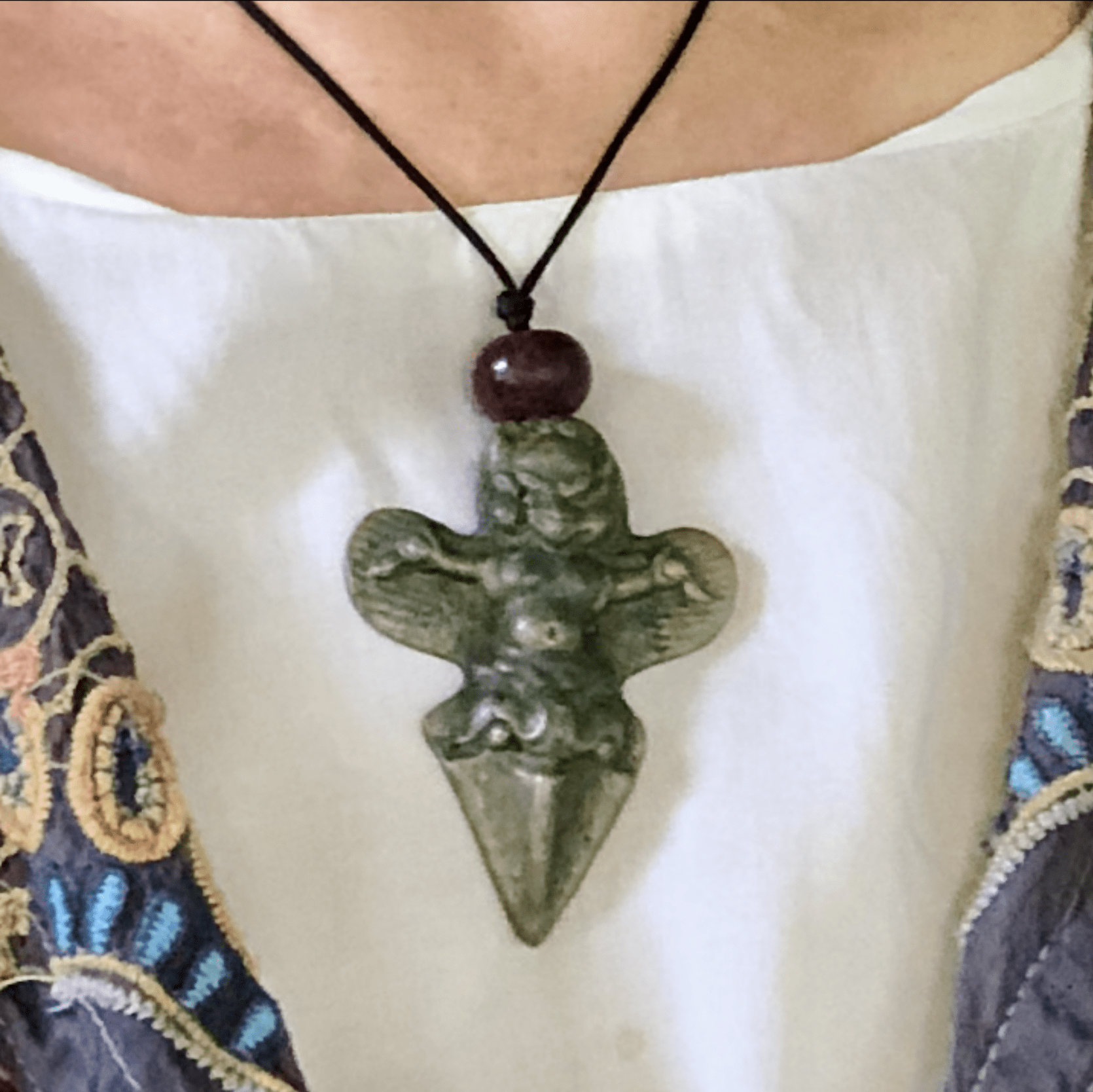 To free his mother, Garuda promised the treacherous Naga with a pot of “Amrita”, the divine nectar of eternal life. In his quest Garuda overcame so many obstacles and defeated evil gods in battle, that the God Vishnu was so impressed that he granted Garuda immortality. Garuda became a divine God, dedicated to Vishnu to carry him through the skies. In the final ending, Garuda won his mother’s freedom, and he stole the Amrita divine nectar away before the nagas could drink it. Ha!
To free his mother, Garuda promised the treacherous Naga with a pot of “Amrita”, the divine nectar of eternal life. In his quest Garuda overcame so many obstacles and defeated evil gods in battle, that the God Vishnu was so impressed that he granted Garuda immortality. Garuda became a divine God, dedicated to Vishnu to carry him through the skies. In the final ending, Garuda won his mother’s freedom, and he stole the Amrita divine nectar away before the nagas could drink it. Ha!
In Buddhism, Garuda is not a single god but more of a mythical species. Their wingspan is said to be many miles wide. And when they flap their wings they bring hurricane-force winds.
In Tibetan Buddhism, Garuda is one of the Four Dignities, highly respected Bodhisattva of the animal kingdom. There are just four animals in this high category: the Dragon represents power, the Tiger is confidence, the Snow lion a symbol of fearlessness, and the Garuda represents wisdom.
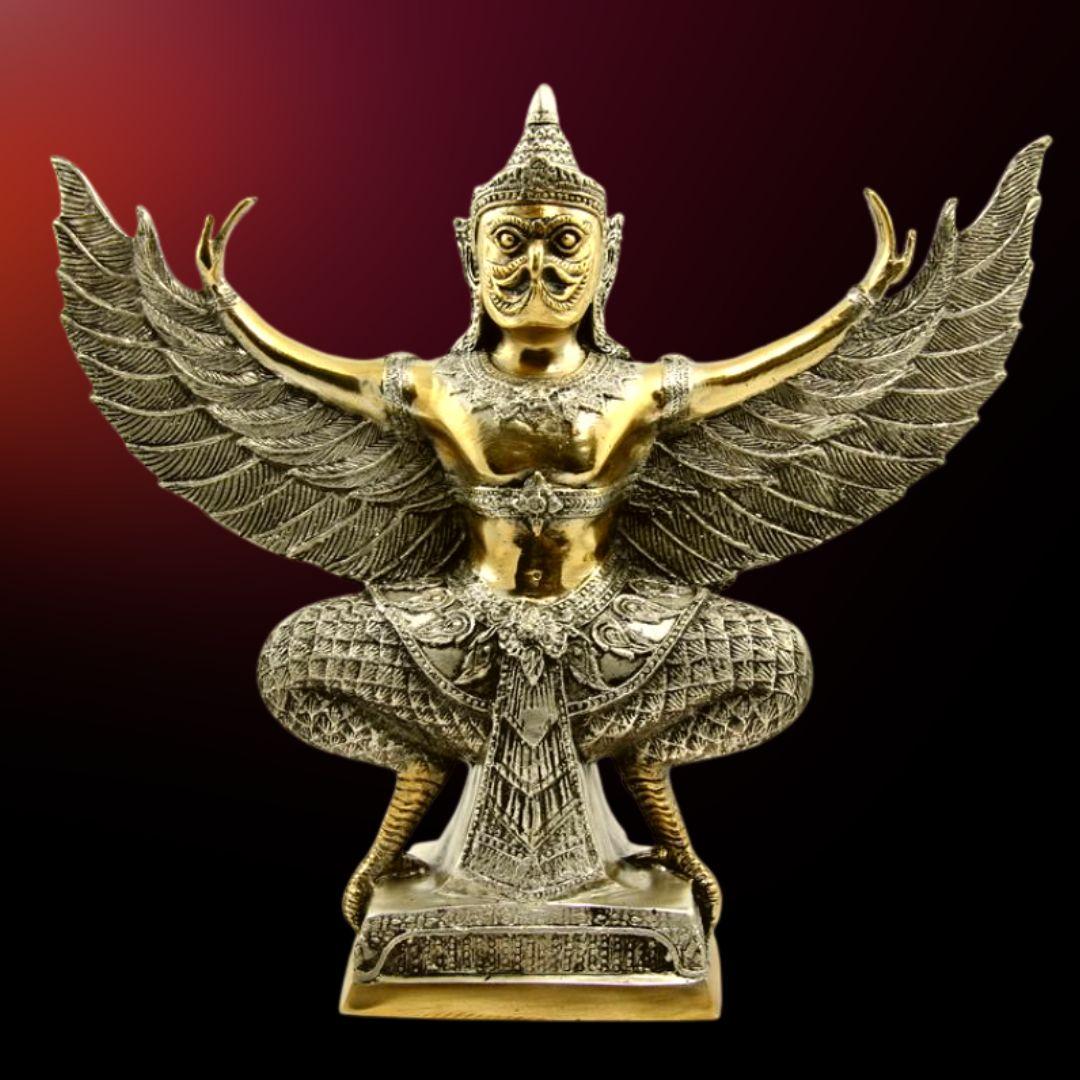
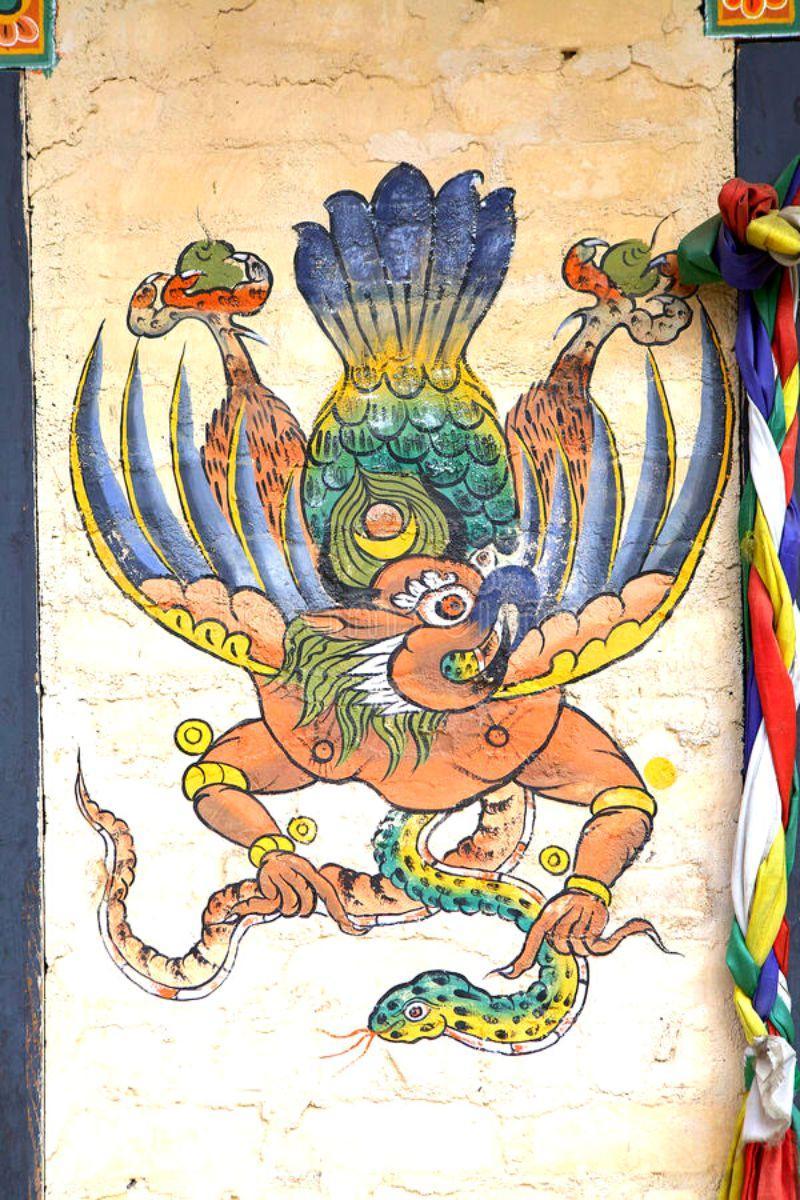 Garuda Qualities:
Garuda Qualities:
- Garuda flies through the air carrying Vishnu, the preserver on his back.
- Garuda has human torso and arms.
- Some have four arms, Buddhist Garudas sometimes have only wings.
- Head of a bird, or human head with beak.
- Garuda wings are so huge they darken the sky, and their wings may cause hurricanes.
- Garuda wears Nagas as jewelry.
- Garuda protects people against snakes, snakebites, and other poisons.
- Garudas and Nagas can be seen in Balinese paintings, Himalayan bronzes, Japanese and Tibetan ritual dramas, Balinese and Thai shadow puppets, Cambodian architecture, Hindu temples, and Bhutanese masked dances.
- Garuda can be male or female.
Although some stories depict Nagas as Garuda’s enemies, they are not always evil. In fact, Nagas are sometimes worshiped in their own right as carriers of blessings and ancient founders of the human race. In some parts of India, a cobra nest may become a shrine to the Nagas. Women offer the snakes milk, fruit, and flowers, and entice them out with songs and incense with fertility prayers. People sometimes play music before deadly cobras without danger.
Insignia of a Garuda
Garuda is an integral part of the state insignia of India, Indonesia, and Thailand. Like a coat of arms, the ancient Garuda is very possibly the historical precursor of the Phoenician-Babylonian Phoenix, mythical bird of fire still found in modern insignia of Roman and Western royalty.
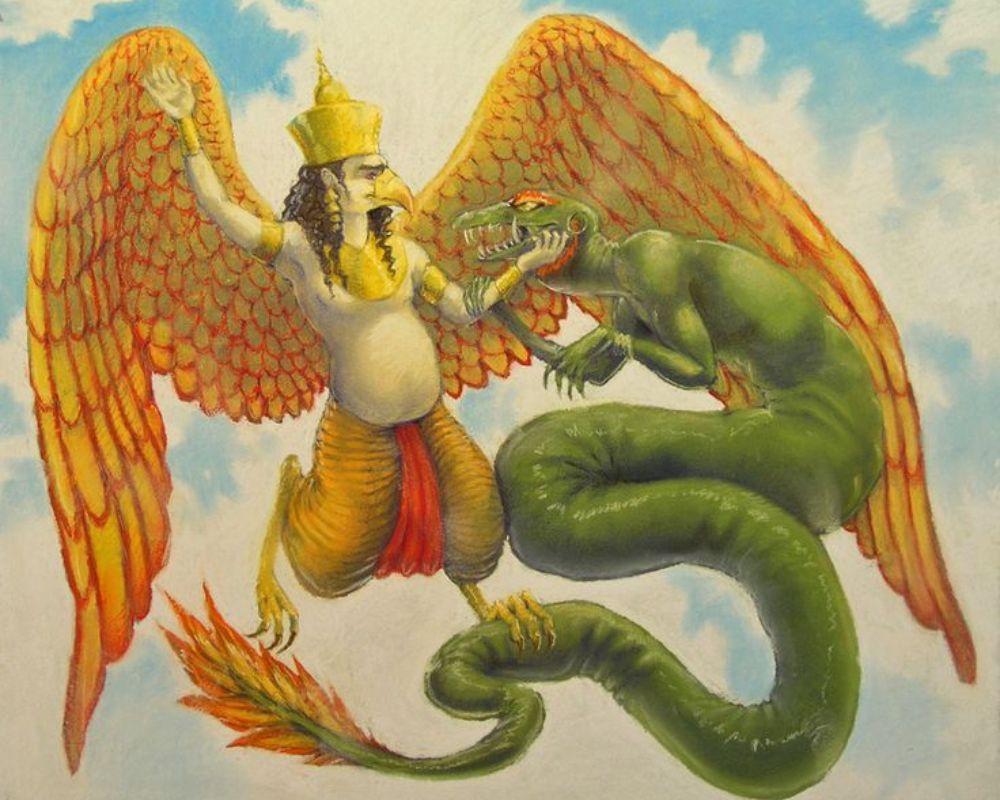 What is the Kencana Statue in Bali?
What is the Kencana Statue in Bali?
See photo at top of page. In Bali, the huge statue of Garuda is 75-meters tall with Lord Vishnu riding on the mythical bird. The statue represents a deep faith of all Hindus of Bali. As the “preserver God”, Lord Vishnu holds four symbolic objects in his four hands: a lotus flower, mace, a conch, and a disc. This statue is located in Ungasan, Badung, Bali near the airport, the perfect position for Garuda to watch over the island!
This impressive Bali sculpture was envisioned by Indonesian sculptor Nyoman Nuarta, who designed and built it with the Minister of Tourism, to create an “iconic landmark of Indonesia, something great for our children, grandchildren, for our generation and for the world”. The project included hundreds of collaborators who made 724 modules in wax, then molds in fiber glass, copper, and brass, transported them to Bali where the elements were recomposed and welded by hand. This demanding feat took over 20 years and cost more than 100 million dollars.
High in the mountains of Dochula, Bhutan, Buddhist monks perform the Garuda dance with traditional masks and winged costumes.


